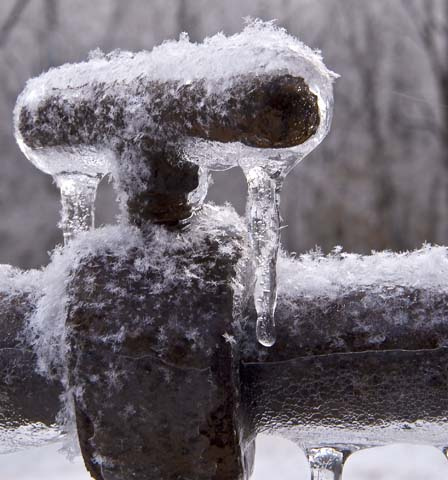Avoid Frozen Plumbing in Winter: Pro Tips
Avoid Frozen Plumbing in Winter: Pro Tips
Blog Article
What're your ideas regarding How to Prevent Your Pipes From Freezing?

Winter can damage your plumbing, especially by freezing pipelines. Below's how to avoid it from happening and what to do if it does.
Introduction
As temperature levels drop, the risk of icy pipelines rises, possibly resulting in expensive repairs and water damage. Understanding just how to stop frozen pipes is vital for home owners in cool climates.
Recognizing Frozen Pipes
What triggers pipelines to freeze?
Pipelines freeze when revealed to temperatures listed below 32 ° F (0 ° C) for extended durations. As water inside the pipelines freezes, it expands, taxing the pipeline walls and potentially creating them to burst.
Dangers and damages
Frozen pipes can cause supply of water disturbances, residential or commercial property damage, and costly repairs. Ruptured pipelines can flood homes and create extensive architectural damage.
Indicators of Frozen Water Lines
Identifying frozen pipes early can avoid them from bursting.
Exactly how to determine icy pipes
Look for decreased water flow from taps, unusual smells or noises from pipes, and noticeable frost on exposed pipes.
Avoidance Tips
Insulating at risk pipes
Cover pipelines in insulation sleeves or use heat tape to safeguard them from freezing temperatures. Concentrate on pipelines in unheated or external areas of the home.
Home heating techniques
Keep interior areas sufficiently heated up, specifically locations with pipes. Open up cabinet doors to permit cozy air to circulate around pipelines under sinks.
Protecting Outside Pipes
Yard pipes and exterior faucets
Separate and drain garden tubes before winter. Set up frost-proof spigots or cover outdoor taps with insulated caps.
What to Do If Your Pipes Freeze
Immediate actions to take
If you think frozen pipelines, maintain taps available to soothe stress as the ice thaws. Make use of a hairdryer or towels soaked in hot water to thaw pipelines slowly.
Long-Term Solutions
Architectural adjustments
Consider rerouting pipes far from outside wall surfaces or unheated locations. Add additional insulation to attics, basements, and crawl spaces.
Upgrading insulation
Purchase premium insulation for pipes, attic rooms, and walls. Proper insulation assists preserve constant temperatures and lowers the risk of frozen pipelines.
Conclusion
Stopping icy pipelines needs positive actions and quick actions. By comprehending the reasons, signs, and preventive measures, homeowners can protect their plumbing throughout winter.
5 Ways to Prevent Frozen Pipes
Drain Outdoor Faucets and Disconnect Hoses
First, close the shut-off valve that controls the flow of water in the pipe to your outdoor faucet. Then, head outside to disconnect and drain your hose and open the outdoor faucet to allow the water to completely drain out of the line. Turn off the faucet when done. Finally, head back to the shut-off valve and drain the remaining water inside the pipe into a bucket or container. Additionally, if you have a home irrigation system, you should consider hiring an expert to clear the system of water each year.
Insulate Pipes
One of the best and most cost-effective methods for preventing frozen water pipes is to wrap your pipes with insulation. This is especially important for areas in your home that aren’t exposed to heat, such as an attic. We suggest using foam sleeves, which can typically be found at your local hardware store.
Keep Heat Running at 65
Your pipes are located inside your walls, and the temperature there is much colder than the rest of the house. To prevent your pipes from freezing, The Insurance Information Institute suggests that you keep your home heated to at least 65 degrees, even when traveling. You may want to invest in smart devices that can keep an eye on the temperature in your home while you’re away.
Leave Water Dripping
Moving water — even a small trickle — can prevent ice from forming inside your pipes. When freezing temps are imminent, start a drip of water from all faucets that serve exposed pipes. Leaving a few faucets running will also help relieve pressure inside the pipes and help prevent a rupture if the water inside freezes.
Open Cupboard Doors
Warm your kitchen and bathroom pipes by opening cupboards and vanities. You should also leave your interior doors ajar to help warm air circulate evenly throughout your home.

I was introduced to that article about 6 Ways to Prevent Frozen Pipes from a good friend on a different web blog. Are you aware of another individual who is curious about the niche? Why not share it. I value reading our article about Helpful Tips to Prevent Frozen Pipes this Winter.
Quote & Schedule Report this page